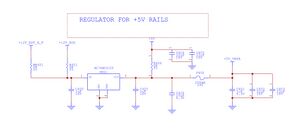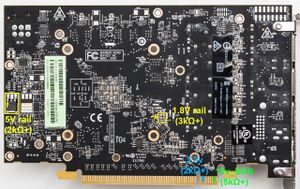More actions
'In this guide, we will explore the 5V rail on Polaris cards, its functioning, utilization, potential issues, and how to resolve them.
| 5V Rail on Polaris GPUs Explained | |
|---|---|
| Type | |
| Device(s) | |
| Difficulty | |
The Controller Circuit
Polaris cards typically use a straightforward Low Drop Out (LDO) regulator to generate 5V from the 12V_BUS supply. While various manufacturers may use different LDOs, the reference one is "MC78M05CDT," featuring three pins: Vin, Vout, and GND.
5V is the initial rail to activate. In some high-end Polaris cards, 5V is generated by two LDOs or, in rare cases, step-down converters similar to those used in Pascal series cards.


Usage
The 5V rail plays a critical role in powering other integrated circuits (ICs) on the card by supplying them with VCC voltage.
Furthermore, 5V is utilized for HDMI power through the F400 fuse, as illustrated in Figure 1.
Common Problems
No Voltage on the 5V Rail
One of the most common issues is the absence of voltage on the 5V rail, with the LDO regulator often being the primary suspect, provided that the 5V rail is not shorted to ground.
5V Short to Ground
As 5V supplies the VCC voltage for nearly all the ICs on the board, thus, almost every IC is a suspect. If it is not an IC, then a capacitor may be shorted.
To pinpoint the source of the short, you can follow the steps outlined in this guide: Short Circuits - Repair Basics
